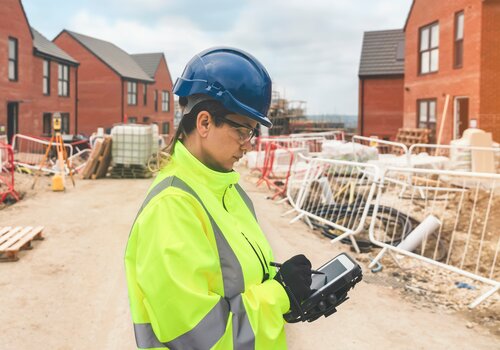Construction brings together many partners and having open and clear communication during construction significantly aids completing projects in a shorter time for less cost. On the contrary, delays in responses to requests for information and distributing change orders can lead to rework, additional work, and longer completion times.
Communication can break down on a construction project for many reasons. Perhaps, workers are incorrectly reporting their progress or waiting too long to report their progress. Sometimes, traditional communication methods, especially ones that rely on paper; change orders and blueprints for instance, can lead in long delays in response time. Also, with the myriad of communication tools available, messages can get lost due to the number of communication tools used on the project.
“The number one obstacle in effective communication on a construction project is providing a faulty ‘pause-to-go’ ratio. You can think of communication as a switchboard where you hit the ‘pause’ button once in a while to reestablish that all stakeholders are on the same page. Too often, I see people stuck on the ‘go’ switch and scared to let off the pedal a bit and think things through,” says Kurtis Samchee, Associate Strategist, MGI Construction Corp. (MGI).
MGI is a full-service construction company that has been both the general contractor and a subcontractor on construction projects, and that gives Samchee a more holistic view of general contractor-subcontractor communications. According to Samchee, at the heart of effective communication is relaying an accurate forecast (within reason) of the upcoming schedule/scope of work and have everyone fully informed on it. “You can think of this as laying the foundation for effective communication,” he says.
Here are six tips for improving communication on construction projects.
- Make communication a priority: At the beginning of a project, outline to everyone what are the expectations and appropriate tools for communicating between project stakeholders.
- Be consistent: Be consistent regarding which medium(s) you use to communicate, the scheduling of your communication, as well as the verbiage used to describe places, things and processes.
- Be concise: Don’t let unnecessary information clutter your message. Most people have difficulty picking out multiple parts of a message. Too often, people only respond to part of a communication while missing other key details.
- Respond right away: Even if your response is that you are swamped and will respond to their message at a later time, if you respond right away, the person isn’t wondering if you received it or is being acted upon.
- Confirm understanding: Confirm that you have received and understood a message; repeat significant details in your response.
- Keep communication simple: Limit communication to as few systems as possible so communications are easier to track.
Using Communication Tools
Frédéric Guitton, Chief Strategy Officer of RedTeam agrees wholeheartedly with the last tip. “General contractors should set communication standards and even offer tools to help centralize communication in one environment,” says Guitton. “One risk that is inherent to communication breakdowns is the number of ways used for parties to exchange information (text, email, verbal, share drives, phone calls, etc.).
Providing and establishing a communication process will help avoid gaps that can be created when people on the job don't have the information, they need to perform their work efficiently.” RedTeam provides an enterprise solution for the construction industry complete with its own communication tool.
Guitton says the key to communication starts with the tracking of communication. “Being able to verify if and when information was shared or received. Documenting communication is critical as it sets the tone for transparency and accountability among the parties involved on a project.”
Being able to determine who said what to whom and when it was communicated can be a hugely beneficial when resolving disputes.
“In legal fees alone, disputes cost the construction industry [in North America] millions of dollars,” says Geoffrey Gualano, co-founder, FieldChat. FieldChat is a communication platform that organizes communications into groups, such as electrical, or all subcontractors, or change orders, etc. The organization of communication by group can be constructed to match the needs of individual projects.
Although many project management apps have communication tools within them, subcontractors don’t necessarily want to learn, use, and perhaps purchase, a new app each time they work on a project with a different general contractor. With FieldChat, people can send messages to the phone numbers of the subcontractors and the replies of the subcontractors will be posted in the app, thereby putting all communication into one place.
“For the subs, there is no need to learn a new technology. They just reply to a text using the text message service on their phone,” says last name. “Plus, all the information is aggregated in FieldChat so the general contractor can review information from all subs in one place.”
Join over 40,000 industry peers who receive construction industry news and trends each week. Subscribe to CONEXPO-CON/AGG 365.












